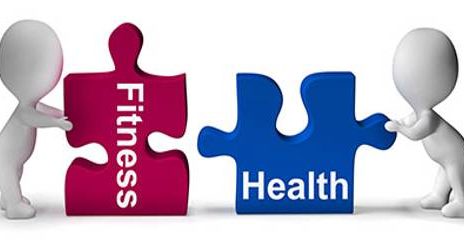Let’s be honest. After having a baby, the focus is everywhere but on you. The tiny human, the sleepless nights, the feeding schedules… it’s a whirlwind. And in the middle of it all, you’re left with a body that feels, well, unfamiliar. Your core, your very center of power, has been stretched and challenged in ways you never imagined.
Here’s the deal: postpartum recovery isn’t about “bouncing back.” That phrase? Let’s just toss it. It’s about rebuilding. It’s a gentle, intentional journey of restoring function and connection to the deepest layers of your body. And it all starts with your core.
What “Core” Really Means After Baby
When you think “core,” you might picture six-pack abs. Nope. Not even close. Your postpartum core is a complex canister—a team of muscles working together. Think of it like a cylindrical box.
- The Top: Your diaphragm (your main breathing muscle).
- The Front & Sides: Your abdominal muscles, including the rectus abdominis (the “six-pack” muscle) and the deeper transverse abdominis, your body’s natural corset.
- The Back: Your spinal muscles and fascia.
- The Bottom: Your pelvic floor muscles, a hammock-like structure that supports your organs.
Pregnancy and childbirth affect every single part of this system. Hormones like relaxin loosen the ligaments. The growing uterus stretches the abdominals—sometimes causing diastasis recti, a separation of the abdominal muscles. The pelvic floor endures immense pressure. So, yeah, your entire core needs a thoughtful rehab plan, not just a bunch of crunches. In fact, crunches can often make things worse.
The First Steps: Honoring the Fourth Trimester
The first six to twelve weeks postpartum—the so-called “fourth trimester”—are for rest and reconnection. This isn’t the time for intense workouts. It’s a time for listening to your body. Your main job? Genuinely, it’s to heal and bond with your baby.
So what can you do? Start with your breath. Deep, diaphragmatic breathing is the most powerful—and most overlooked—tool for postpartum core restoration. As you inhale, imagine your pelvic floor relaxing and descending. As you exhale, gently draw your lower abdominals in and up, feeling your pelvic floor lift. This simple act re-establishes the connection between your diaphragm and your pelvic floor, coordinating the top and bottom of your core.
Listening to Your Body’s Signals
Pay attention. Do you feel coning or doming in your abdomen when you sit up from lying down? That’s a sign your core isn’t ready for that movement yet. Roll to your side and push up with your arms instead. Feeling pressure or heaviness in your pelvis? That’s your body asking for less standing and more rest. These aren’t setbacks; they’re conversations. Your body is talking—the trick is learning to listen.
Rebuilding Your Foundation: Beyond the Basics
Once you get the green light from your healthcare provider—usually around 6 weeks for an uncomplicated vaginal delivery and longer for a C-section—you can slowly begin to reintroduce movement. The key word is slowly.
1. Check for Diastasis Recti
Most women have some degree of abdominal separation after birth. You can check for it yourself. Lie on your back, knees bent. Place your fingers horizontally just above your belly button. Gently lift your head and shoulders off the floor. If you feel a gap or a squishy space between the muscles, that’s diastasis. Don’t panic. It’s incredibly common and, with the right exercises, often improves significantly.
2. Foundational Exercises to Start With
- Heel Slides: Lying on your back, knees bent. Inhale to prepare. Exhale as you slowly slide one leg straight along the floor, maintaining tension in your core so your lower back doesn’t arch. Inhale to slide it back. This teaches pelvic stability.
- Dead Bugs (Modified): Again, on your back, arms reaching to the ceiling, knees bent at a 90-degree angle (tabletop). Inhale. Exhale as you slowly lower your right arm and left leg toward the floor, only going as far as you can without letting your back arch. It’s a tiny, controlled movement. The goal is control, not range.
- Pelvic Tilts: A simple, gentle movement to awaken your deep abdominals and mobilize your spine.
A Sample Week of Early Postpartum Core Work
| Day | Focus | Activity |
| Monday | Connection & Breath | 5 minutes of diaphragmatic breathing, 10x pelvic tilts |
| Tuesday | Rest & Integration | Gentle walking, focus on posture while holding baby |
| Wednesday | Stability | 2 sets of 8 heel slides per side, modified dead bugs |
| Thursday | Rest | Light stretching, continued breathwork |
| Friday | Full Circuit | Combine breathing, pelvic tilts, heel slides |
| Weekend | Active Rest | Walking, gentle movement as energy allows |
This isn’t about intensity. It’s about consistency and mindfulness. Even just five minutes a day can spark significant change.
What to Avoid (And Why It Matters)
In those early months, certain movements can put excessive pressure on a healing core and pelvic floor. Honestly, it’s often more about what you don’t do.
- Heavy Lifting: Beyond your baby and car seat, try to avoid it. And when you do lift, exhale on the effort.
- High-Impact Exercise: Running, jumping, burpees? They can wait. Your pelvic floor needs time to regain its spring.
- Traditional Abdominal Exercises: Sit-ups, crunches, full planks, and leg lifts often exacerbate diastasis recti and increase intra-abdominal pressure. They’re just not your friends right now.
- Holding Your Breath: During any exertion—even lifting a laundry basket—remember to breathe. Exhale on the effort.
The Long Game: Core Strength for Motherhood
This process isn’t a 6-week sprint. It’s the foundation for your strength as a mother—for lifting toddlers, carrying car seats, and playing on the floor without pain. A restored core means better posture, less back pain, and more energy. It’s about functional strength for the long, beautiful, and physically demanding journey of parenthood.
And if you feel lost, or if you’re experiencing pain, leaking, or a persistent bulge in your abdomen, please seek help. A pelvic health physical therapist is an absolute game-changer. They can provide a personalized assessment and guide you safely back to the activities you love.
Your body has done an incredible thing. It doesn’t need to “get back” to anything. It needs to be guided forward, with patience and kindness, into its new strength. A strength that’s deeper, wiser, and forged in the fires of creation itself.




